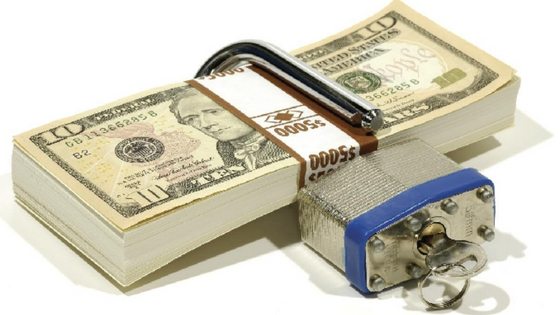
Recovering From Bad Financial Decisions? Here’s How To Recoup >3% Profits In < 12 Months💮
Recovering From Bad Financial Decisions? Here’s how to recoup more than 3% of profits in less than 12 months…
>Download Now: Free PDF How to Maximise Margins with Price Trials
Did you know that bad pricing mistakes cost companies like yours on average 3 per cent of profit each year?
Just think of it this way, a business like yours with teams managing millions of dollars of revenue make on average 2,000 – 3,000 pricing and commercial decisions a year. But, what if a certain percentage of these decisions lead to ongoing price mistakes?
In effect, every pricing mistake that goes unnoticed over the course of a year costs your business millions of pure profit dollars.
And the problem amplifies when the economy is in a downturn as we’re all going to realise soon. As a result of the COVID-19 crisis, for example, many businesses will be left with a product portfolio that’s massively depleted in value after months’ of excessive discounting, deep promotions, special prices and rebates. Others will be suffering from serious customer churn and brand image problems as customers switch to suppliers whom they believe won’t hike up prices as the economy worsens.
In this article, you’ll learn how to fix cash flow problems and prevent managers from making bad financial decisions.

Recovering from bad financial decisions and cash flow issues
The real problem with consistently bad financial decision making is cash flow. In simple terms, with every bad decision you make, you lose even more of your hard-earned revenue, volume and margin every single day – and often without even realising it. Then you’re in the situation whereby profit and cash flow are at odds and you need to cut staff and/or sell assets you may not want to sell. The reasons can always be seen on the balance sheet. Profits do not equal cash flow.
It is vital to the organisation’s bottom line that CFOs ensure all pricing and financial decisions are financially sound.
Cash flow shapes the company’s ability to pay its bills. Cash balance is the total cash received minus the total cash paid out in a given period. And this is where things become complicated with cash flow management.
Some of the bad decisions businesses create because of cash flow problems
In some cases, bad business decisions lead to cash flow problems. When you are in the crunch, your ability to decide is affected by inadequate resources and of fear. Consequently, leading to bad decisions in three major areas of your business which are:
- Pricing: You price your products too low; underselling your offer because you think this will sell more. Or increasing your prices way too much because you need to get money through the door. You then offer more and deeper discounts or specials to promote your products to customers in the hope that lower prices will push more volume. But this logic is not always the case, and margin on sell will be way below what you were targeting, causing ongoing cash-flow troubles.
- Hiring/Firing: You decide to postpone hiring someone you need because cash is tight and the economy is down, but you have a steady demand for your products. You are struggling because you do not have the right staff to help you even meet current demand, which is impacting service, performance, quality, timing. As a result, getting negative reviews and unsatisfied customers.
Hesitating on firing a mediocre employee because the cost of searching, replacing, re-training, etc. can cause financial loss.
- Spending: You don’t spend enough on new equipment where you should because you fear that you won’t get a high enough return on CAPEX. You don’t take risks for the benefit of your business just because of the costs involved.
Decisions that impact cash flow the most and how to avoid it
A lot of companies have cash flow problems because they fail to achieve their target margins. Not hitting the target margins will lead to delays in paying your staff’s salaries and underserving your customers. This is a working capital requirement. Working capital is needed to pay payroll before you get your profits.
Pricing
The number one reason why companies fail is that they are not pricing correctly. How you properly price your products or services and the profit it generates is significant to maximise cash flow.
You should redesign your pricing revenue model, as this will have a huge effect on profits over anything else. Hence, consider the pricing model that suits best for your business (Value-Based Pricing, Fixed Fee, Time & Material, or Milestone Driven).
Cash flow can quickly go wrong if you’re underselling your offer. And the trouble is not far off if you don’t have sufficient margin to produce the working capital to pay for bills, supplies, and payroll.
Hiring/Firing
Even though hiring and firing are both difficult to do, it’s a vital step to recovering from bad financial decisions. Having the right employees increases your profitability and makes your business a great place to work.
Hiring and firing is the second-most pivotal decision regarding cash flow. Essentially, you need talented employees who will fit the culture and who are genuinely committed to working toward the success of the company. If employees don’t fit, take the proper steps by firing them. Employees who are not competent or happy in their jobs will inevitably harm team morale and the long term success of the company.
Spending
When you are recovering from bad financial decisions you need to keep track of your spending. When a business experiences cash flow problems, it usually goes back to default to what’s safe and secure. Short-term cash problems shouldn’t keep a business from making good long-term decisions.
Having cash flow problems, prevent a business from taking advantage of opportunities that come its way. Like for instance if you’re a supplier and a vendor reaches out to you (offering widgets that they know you use them year-round). They gave you a deal of 25% off if you buy it all at once. It’s an instant competitive pricing advantage for your business because you got lower costs. However, it’s not if you don’t have enough cash make the deal.
Make the right decisions when recovering from bad financial decisions
CFOs seeking to better support their pricing managers should reassess the role of pricing in the business. Pricing managers need great stakeholder engagement skills to gain buy-in for decisions,; but they also need great analytical skills and pricing knowledge to know a good decision from a bad one. In effect, you need to develop more specialised positions focused on individual decision types to make better financial decisions.
Remember to look at the big picture when recovering from bad financial decisions
Before you think about reducing prices, think again. A sudden reaction to the recession is never good for business in the long run, and could even ruin your brand image. Instead, make your pricing decisions based on clear strategic goals and never lose sight of the following:
1. Modify your sales goals
Sales teams regularly experience “coffin corners of costing” during customer bid and tender processes. This means they overshoot figures on capacity utilisation and are too willing to give away margin by cutting prices of high-value products to win more deals. It takes a good pricing team to work out when the business should set dollar contribution goals for the right products and customers. Trying to win every single deal at lower margins to compete with ‘phantom bids’ that fall way below cost will only lead the company into a very uncomfortable financial situation. Your customers will also be concerned about your service standards slipping and consider a more expensive provider whom they believe will be a safer option.
2. Know your competitive advantage
In a recession, pricing should be aligned to your industry position and long-term strategy. If your competitive advantage derives from a low-cost structure, cost-cutting can help to pump up your market share, positioning your firm for a payoff when the economy improves. But a common mistake is to use price as a competitive advantage for high-value products by giving away services or discounting to your best customers. In effect, this decision means you end up eroding the base of profitable customers and in turn, reduce the potential for profitability when the downturn ends.
3. Leverage your segmentation technique
If you are a high fixed cost business, using b2b tiered pricing can help you to generate more revenue from your customer group. Aim for “first-class,” “business-class,” and “economy” pricing, just like what airlines do. Segmentation based on price sensitivity makes sales opportunities that can recover losses in other areas, especially that there’s mostly little difference in production costs across the portfolio.
4. Indulge loyal customers
Losing a customer drains customer equity and increases the cost of acquiring a replacement. Keep your best customers coming back for more by offering compelling loyalty programs. Make it easy for them to buy from you. Offer subscriptions to new services; give them personalised bundled offers that they can’t resist. Break away from onerous contracts and give customers useful revenue models and payment terms that make it easier for them to buy from you.
5. Recover all the costs involved
To do this, set the lowest volume order so that processing costs won’t take away all the profits. Strengthen collection efforts to lessen the time between orders and payment. Without hurting customer value, set a price menu for “free” services like delivery or favourable payment options. Such offerings increase revenue margin opportunities when sold separately. They also offer a benchmark value for customers who previously discounted them because they’re free.
6. Take care of your brands
During a downturn, brands become more valuable because they provide defensible margins. Offer customers affordable luxuries or give them a psychological boost with the right promotion. Don’t cut prices on your high-priced products during a downturn, assuming this will drive volume. Find a market that wants what you have to sell and set the optimal price. Don’t rely on low prices and discounts to do the job for you. Instead, utilise word-of-mouth marketing and strategic channel promotions to give you the increased visibility and premium appeal you want.
Implications
Changing the traditional ‘management by committee’ model into a decision expert approach; enables finance to support more of the right decisions.
A pricing team with the depth of expertise and a range of skills can provide you differentiated support; — ahead of the decision. They can enable a responsive, effective, scalable and widely applicable pricing approach; delivering, in turn, a financially sound decision without delay.
Many companies fail to account for the impacts of price on volume and also of volume on costs. In a downturn, trying to recoup these costs by increasing prices can be devastating.
〉〉〉 Get Your FREE Pricing Audit 〉〉〉
Conclusion
Think differently about how you are pricing – don’t just do the same old broken things. Think outside the box. Find unique ways to increase profit in a downturn.
Introduce new methods and technologies: Test new methods and approaches. Trial some b2b pricing examples like dynamic pricing – and implement better techniques and value-based pricing. Don’t persist with crude price rises across the; board to make money now this will only destroy the; value of your portfolio and customer relationship in the months to follow.
Find talents that can help you do pricing properly – don’t just rely on project teams that don’t have the required capabilities; – get help from experts or hire experts in their field to drive changes in your business.
Click here to access your free pdf guide on driving pricing strategy in your business.
For a comprehensive view and marketing research on integrating a high-performing capability team in your company,
Download a complimentary whitepaper on How To Maximise Margins.
Are you a business in need of help to align your pricing strategy, people and operations to deliver an immediate impact on profit?
If so, please call (+61) 2 9000 1115.
You can also email us at team@taylorwells.com.au if you have any further questions.
Make your pricing world-class!
Related Posts
Leave a Reply Cancel reply
Categories
- marketing strategy (26)
- Organisational Design (14)
- Podcast (114)
- Pricing Capability (87)
- Pricing Career Advice (10)
- Pricing Recruitment (19)
- Pricing Strategy (285)
- Pricing Team Skills (13)
- Pricing Teams & Culture (24)
- Pricing Transformation (47)
- Revenue Model (25)
- Sales Effectiveness (27)
- Talent Management (7)
- Technical Pricing Skills (35)






